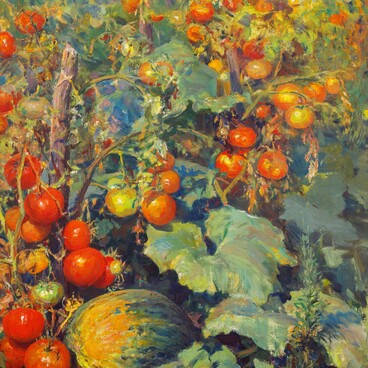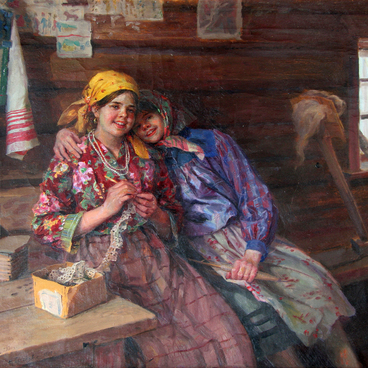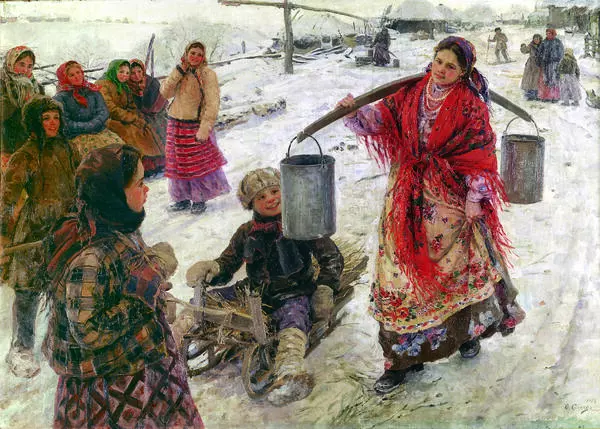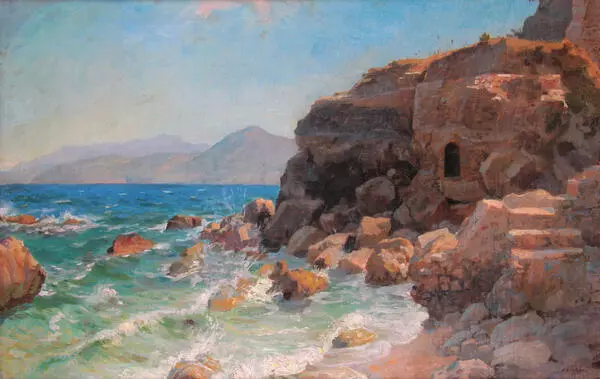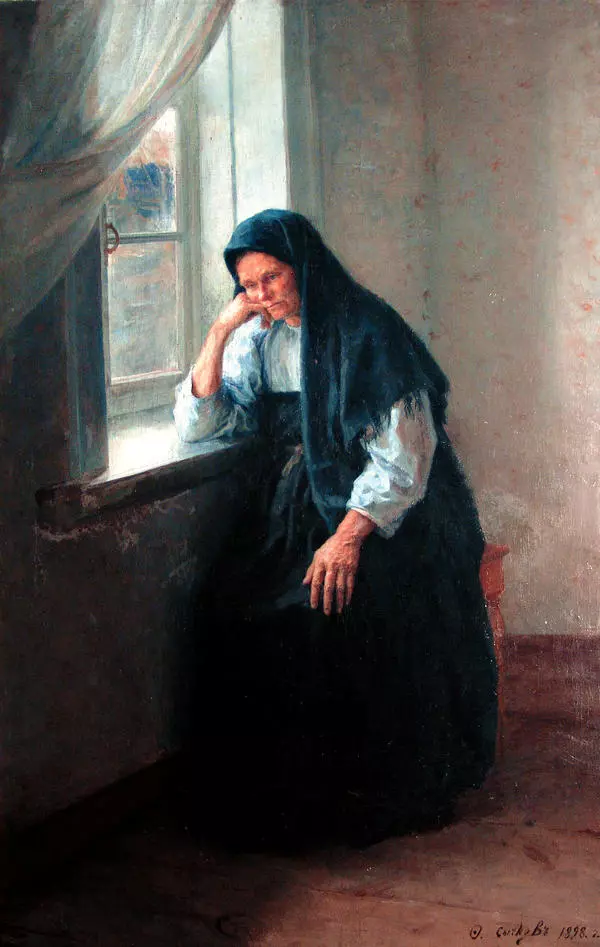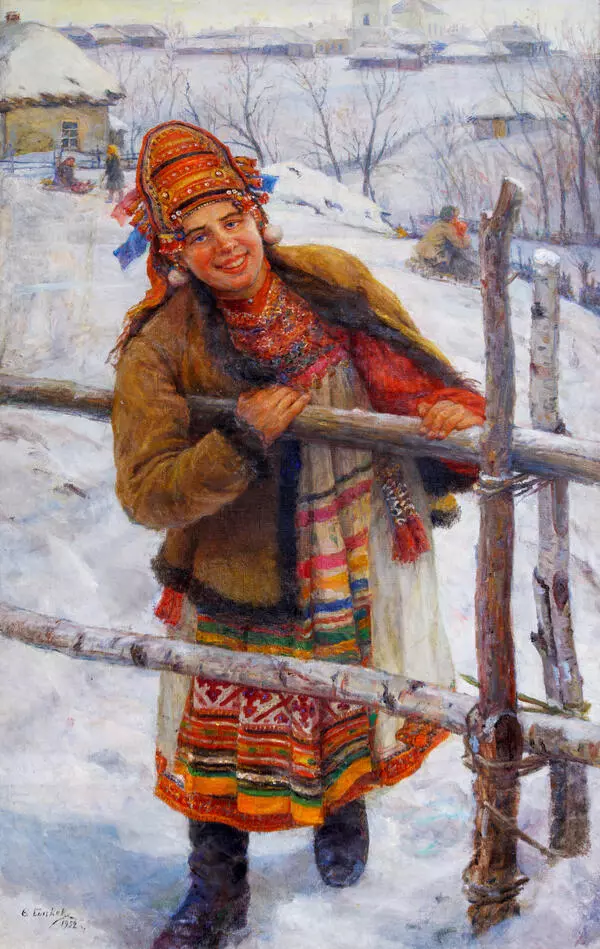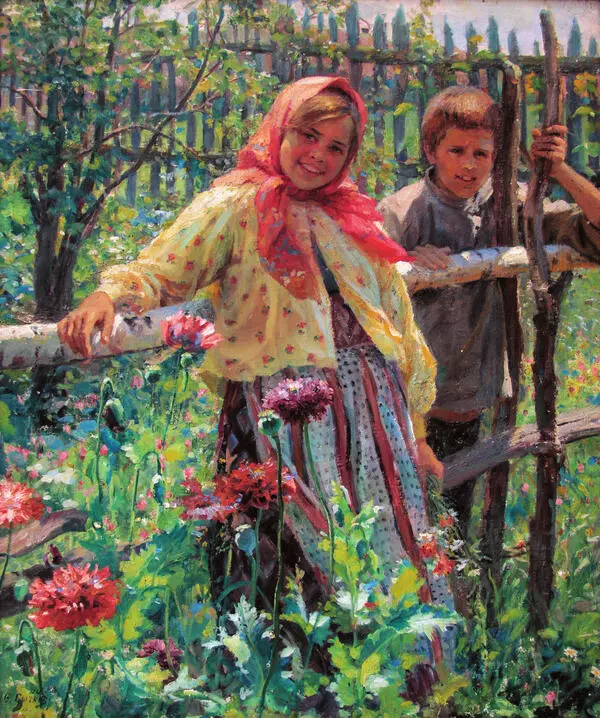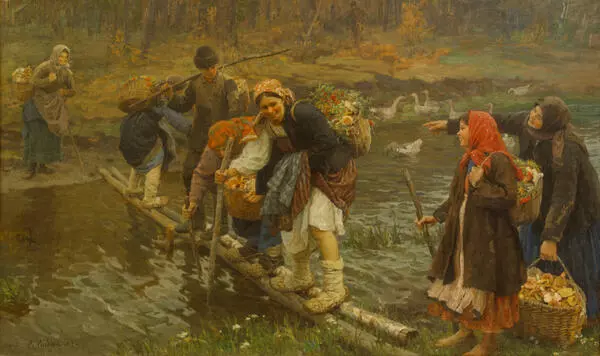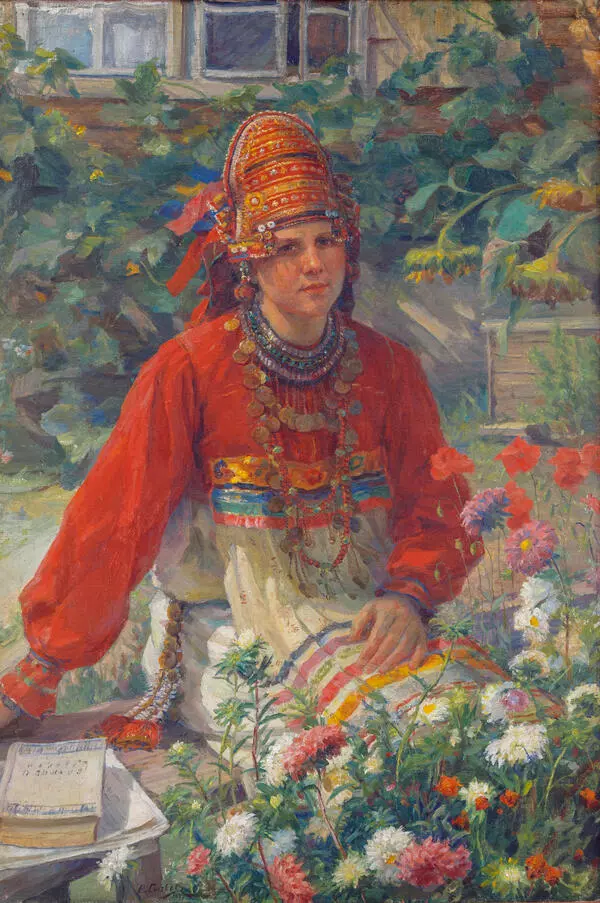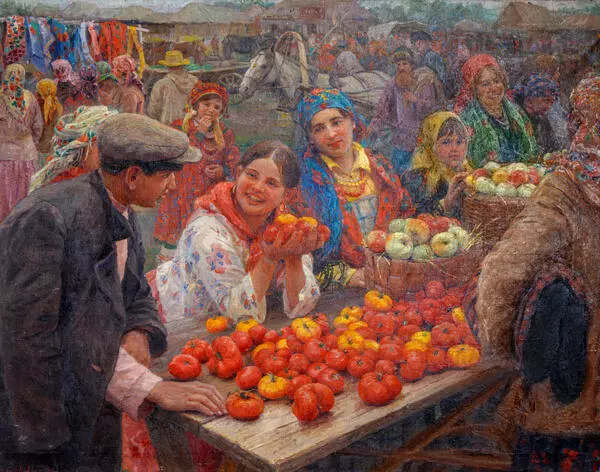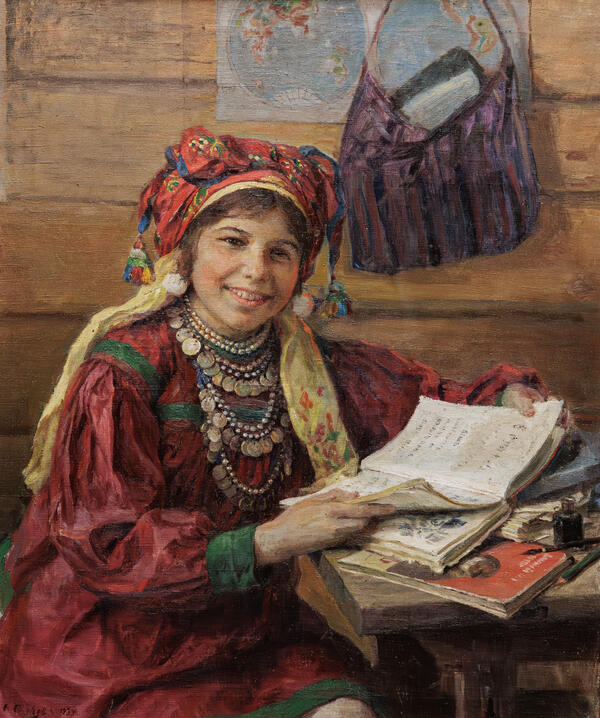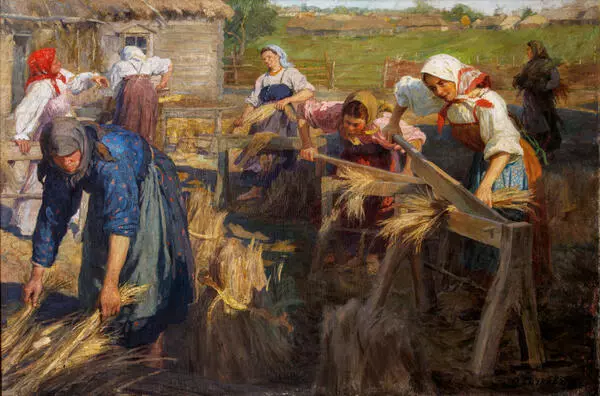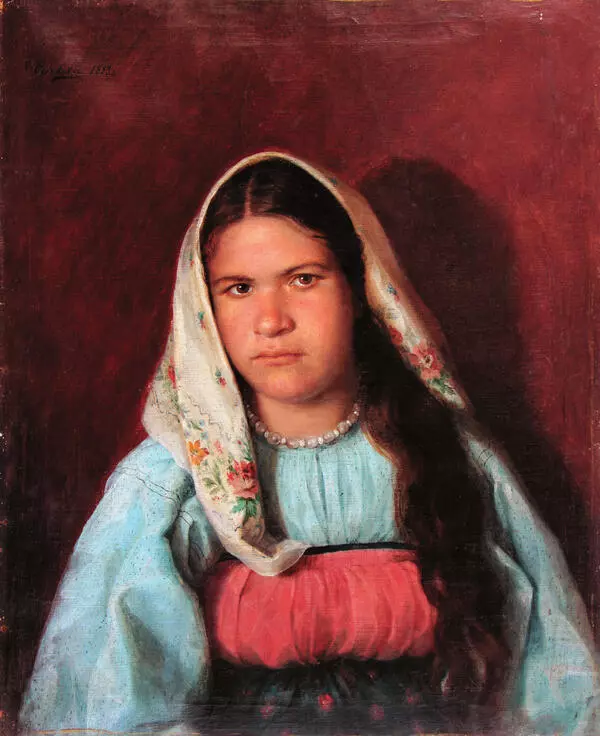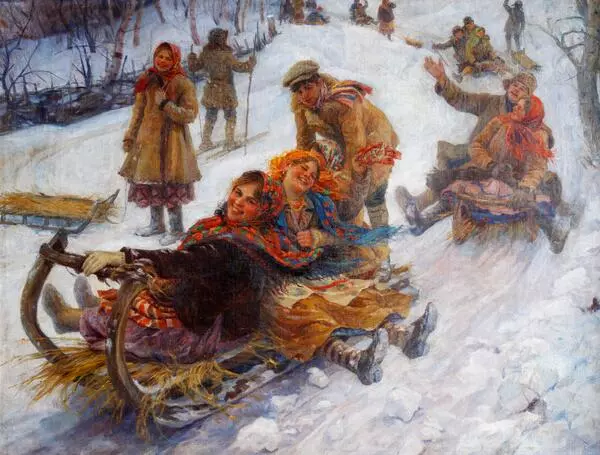In the 1916 painting ‘Girlfriends. Children’, the painter managed to capture and convey the difference in the mood of three rural girls. On the left, a perky, fidgety child sits on the thin birch poles. A barefoot girl is the only one of her girlfriends who dares to climb onto the fence. In the center, a serious girl leans on the fence with a wary look in her eyes. On the right is the youngest girl with a bowl cut. She has a soft and shy smile.
Following painter Nikolay Bogdanov-Belsky, Fedot Sychkov presented the fascinating world of rural children to the public. He created paintings in oil and watercolor. The paintings ‘Friends’, ‘Children among Flowers’, ‘Under a Bush of Rowanberry’, ‘A boy’, ‘At the Bazaar’ and many other works made up a large gallery of various children’s characters.
The painter tirelessly observed children’s behavior and facial expressions. He drew pencil sketches, painted picturesque sketches, and also photographed children who willingly posed for him. In a letter to his friend and colleague Ivan Goryushkin-Sorokopudov, the painter called the ever-present rural children ‘tibriki-vibriki’. He said that they were always ‘at hand’, it was always possible to paint ‘little scenes’ with them (these good-natured words are also from their correspondence).
About 20 pre-revolutionary Russian publishing houses printed postcards with Fedot Sychkov’s paintings printed on them. Among these were “Richard”, “Richard-Ostrowski”, the publishing house of I.S. Lapin, the “Community of St. Helena”, and others. All of them often published children themed postcards: “Troika”, “Laughing Girl”, “The Heavy Fate”, “In the Sun”, “Girls in the Garden”, “Wild Child”, “Sparrows in Winter”, “Boisterous Girls”. People loved them because the painter clearly, simply, and sincerely conveyed the children’s charm and the originality of their facial expressions and gestures. He was able to see something worth noticing in every ordinary situation.
The reproductions of the paintings, which were printed on the postcards, had been presented to the public at Russian and foreign exhibitions. Some paintings remained only on the postcards. Unfortunately, the location of these paintings is unknown.
Following painter Nikolay Bogdanov-Belsky, Fedot Sychkov presented the fascinating world of rural children to the public. He created paintings in oil and watercolor. The paintings ‘Friends’, ‘Children among Flowers’, ‘Under a Bush of Rowanberry’, ‘A boy’, ‘At the Bazaar’ and many other works made up a large gallery of various children’s characters.
The painter tirelessly observed children’s behavior and facial expressions. He drew pencil sketches, painted picturesque sketches, and also photographed children who willingly posed for him. In a letter to his friend and colleague Ivan Goryushkin-Sorokopudov, the painter called the ever-present rural children ‘tibriki-vibriki’. He said that they were always ‘at hand’, it was always possible to paint ‘little scenes’ with them (these good-natured words are also from their correspondence).
About 20 pre-revolutionary Russian publishing houses printed postcards with Fedot Sychkov’s paintings printed on them. Among these were “Richard”, “Richard-Ostrowski”, the publishing house of I.S. Lapin, the “Community of St. Helena”, and others. All of them often published children themed postcards: “Troika”, “Laughing Girl”, “The Heavy Fate”, “In the Sun”, “Girls in the Garden”, “Wild Child”, “Sparrows in Winter”, “Boisterous Girls”. People loved them because the painter clearly, simply, and sincerely conveyed the children’s charm and the originality of their facial expressions and gestures. He was able to see something worth noticing in every ordinary situation.
The reproductions of the paintings, which were printed on the postcards, had been presented to the public at Russian and foreign exhibitions. Some paintings remained only on the postcards. Unfortunately, the location of these paintings is unknown.


